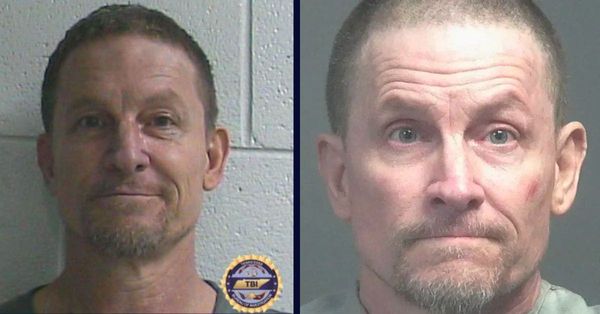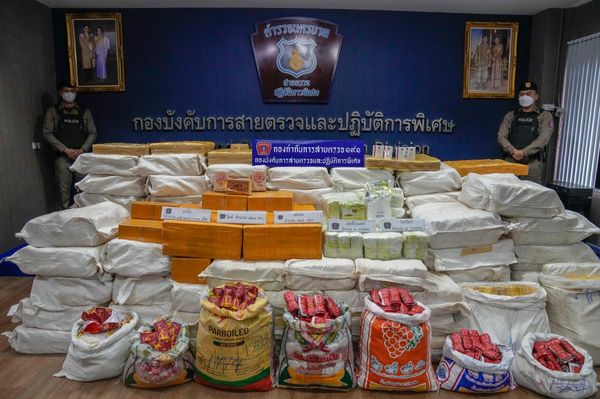
After years creating street art, Jean-Michel Basquiat began his meteoric rise to fame in 1980 with a breakthrough exhibition as part of the Times Square Show. From there, the artist would go on to become the toast of the Big Apple, with a name-making profile in Artforum, his first sale going to the NYC punk icon Debbie Harry, and a budding creative and personal relationship with Andy Warhol. With so many ties to the New York art world, one could be forgiven for not knowing that Basquiat made as much as a quarter of his artistic output thousands of miles away in a sleepy California beach town.
In December 1982, Basquiat began living in Venice, California, at the invitation of the art dealer Larry Gagosian – today, one of the most influential figures in the art world, but at the time still a relatively young aspirant who had opened his first gallery just a few years earlier. Gagosian had met the young creative force while on a trip back east in 1981, and he later gave Basquiat his first west coast show in spring 1982. By the time the collector was able to lure him out to Los Angeles, the pair were primed for an inspired collaboration: during a prolific 18 months in the city, Basquiat would produce more than 100 works, including some of his most pivotal pieces.
Gagosian now pays tribute to this vital period in Basquiat’s creative life with Made on Market Street, drawing loans from as far away as Munich, Germany, and showing more than 30 pieces Basquiat made while living in southern California. Gagosian co-curated the show with the art historian and Basquiat collaborator Fred Hoffman, whom Gagosian introduced to Basquiat in 1982 and who curated the artist’s last major American retrospective, which was shown at the Brooklyn Museum in 2005. “There’s been a lot of Basquiat exhibitions over the past 10 years or so,” said Hoffman. “Clearly he’s in the air a lot, so this is a great time to do this show.”
According to Hoffman, Basquiat almost immediately found LA congenial to his personal and artistic life, finding the relaxed, easygoing atmosphere in Venice to be the perfect change of scenery from New York’s hustle and bustle. Basquiat quickly made friends with key players in the emerging LA hip-hop scene, even releasing a track that he produced during his stay in Los Angeles – the artist and two of his hip-hop collaborators are rendered in his painting Hollywood Africans, a big draw at Made on Market Street. “I think he felt very comfortable,” said Hoffman. “He loved the overall milieu. Even by 1982, he felt under pressure in terms of how he was being received in the NY art world, and LA offered the opportunity to work in an environment that recognized him. It was a perfect match.”
One of the show’s centerpieces is Tuxedo, a massive work that is more than 8ft tall and composed of 15 individual drawings and a collage. Basquiat and Hoffman collaborated on the piece, using photographic processes and silkscreening to achieve the final distinctive result of white text written in blocks over a black background. As Hoffman explained, the inversion of black to white and vice versa was a critical artistic choice that drew in themes central to Basquiat’s art. “All the imagery in Tuxedo that was originally black on white became white on black,” said Hoffman. “He’s basically flipping the whole question of identity of a Black man in a white world to a white man in a Black world. That’s one major dichotomy that he would continue to explore in follow-up work.”
Tuxedo demonstrates many trademarks of Basquiat’s unique way of seeing the world. Placed prominently at the top of the piece is the artist’s three-pointed crown, which is probably the most widely recognized and iconic image in his repertoire. In addition, many of the dozens of words spread out over the piece are obscured to one degree or another, a technique that Basquiat was known to have proudly employed throughout his artistic practice. As he once said to a friend: “I cross out words so you will see them more: the fact that they are obscured makes you want to read them.” Poring over the words (obscured or otherwise), one finds tantalizing hints and clues to the artist’s ideas, such as the names Malcolm X and Vasco da Gama, words and imagery drawn from US paper money, references to world-historical events dating back centuries, and even Leonardo da Vinci’s Mona Lisa.
Tuxedo was the first silkscreen piece that Hoffman and Basquiat collaborated on – as Hoffman recalled, by learning how to use photocopying creatively, Basquiat was able to take his collaging work to a new level. “He understood the possibility of no longer having to rely on unique works of paper, which he would collage on to the canvas.” Through his collaboration with Hoffman, Basquiat eventually arrived at a process where he could photograph a drawing and silkscreen it on to a canvas, allowing him to begin to experiment in entirely new ways. “That introduced a whole new body of work for Jean-Michel,” said Hoffman. “Those works were significantly different from anything he made in New York.”
Made on Market Street also unites Basquiat’s major works Flexible, Gold Griot and M, shown together for the first time ever. These works are immediately noticeable for the numerous wood slats joined together to make the surface that the artist painted on – the wood was salvaged from a fence that had enclosed a courtyard next to Basquiat’s LA studio. This would go on to become a significant technique for the artist, with Basquiat later sourcing lumber in New York for the purpose of doing more wood slat work. “With these, Basquiat rendered a whole new type of Black figures,” said Hoffman. “He evoked qualities of royalty and divinity, African kings – they were a turning point in iconography for Basquiat. It’s very important even to bring these back to LA and exhibit them here.”
Ultimately, with Made on Market Street, Gagosian hopes to continue to bring more depth and nuance to our understanding of Basquiat’s work. Hoffman knows that interest in the artist continues to be high, but he wants the show to break new ground in our ability to truly appreciate Basquiat as a creative force in the lineage of Pablo Picasso and Robert Rauschenberg. “We’ve had a tremendous amount of focus on Basquiat,” said Hoffman, “but there is still tons more than can be done in terms of a greater in-depth understanding of who this man was, how deep his vision was, really how extraordinary and unique.”
Made on Market Street is on show from 7 March to 1 June at the Gagosian in Beverly Hills







